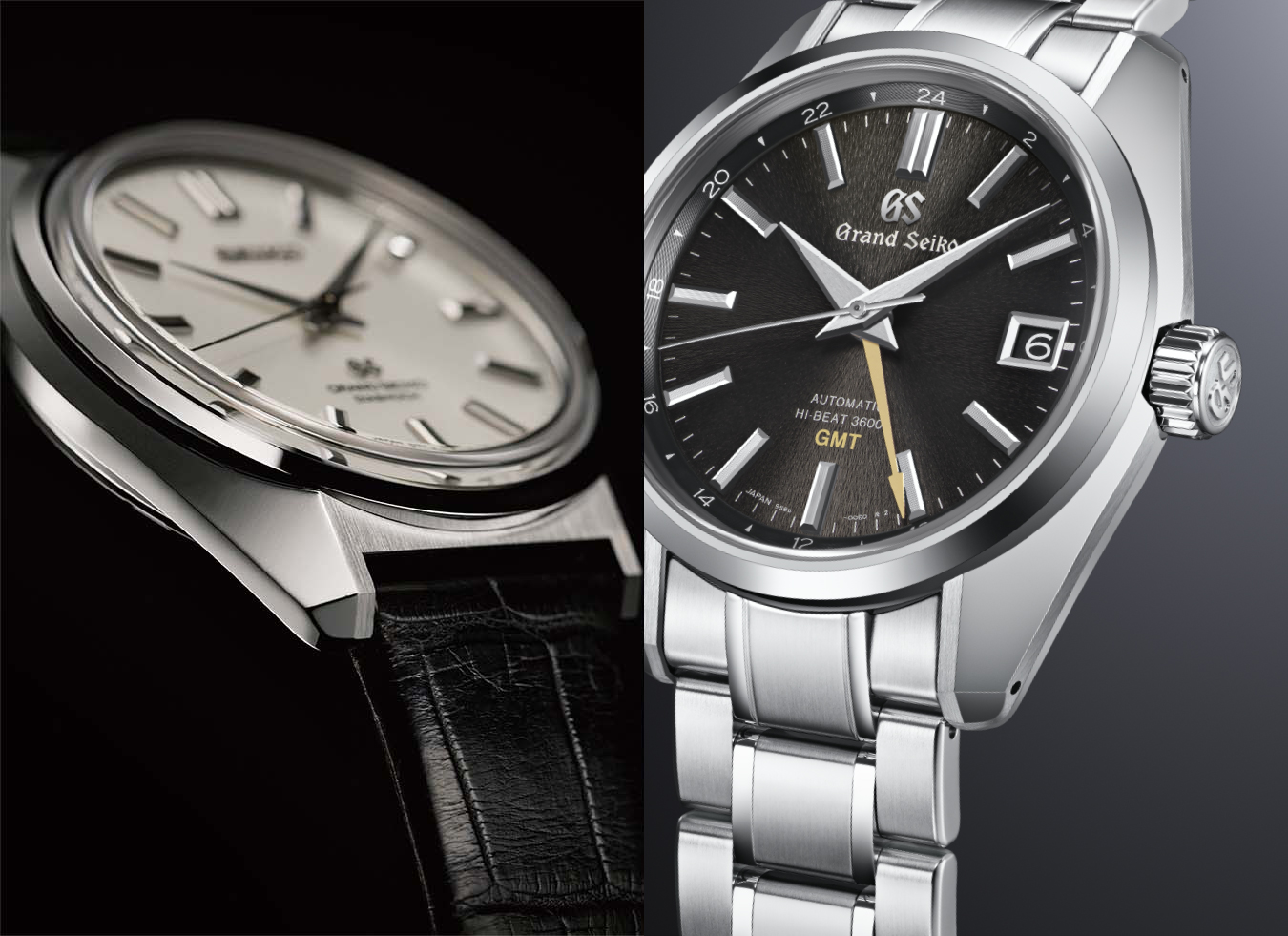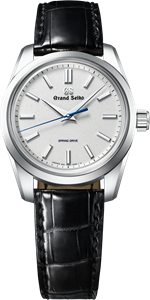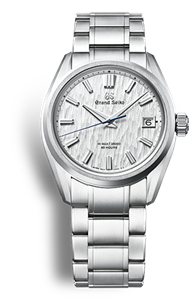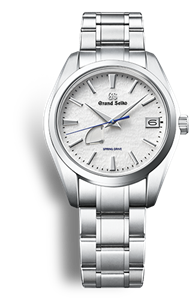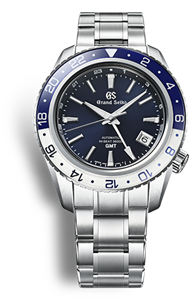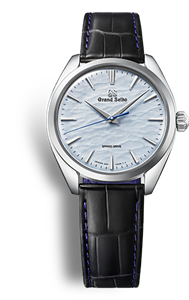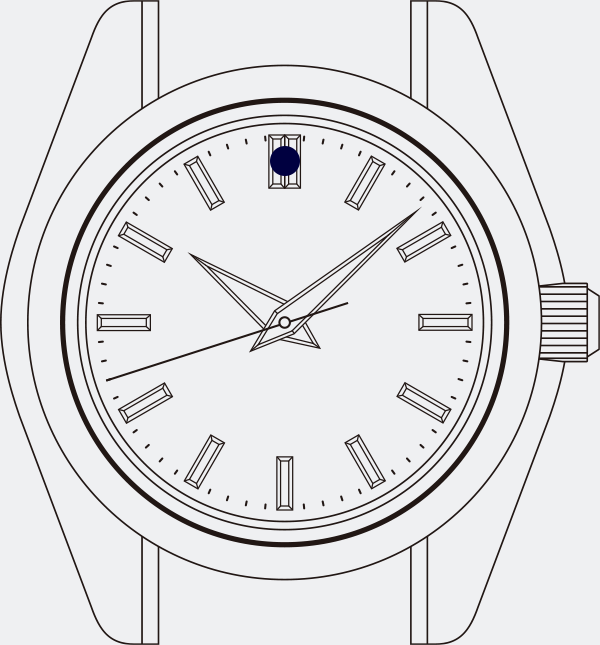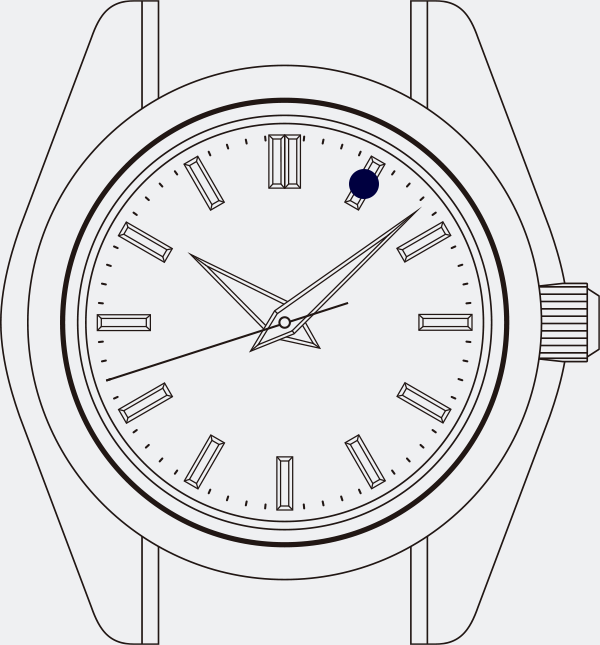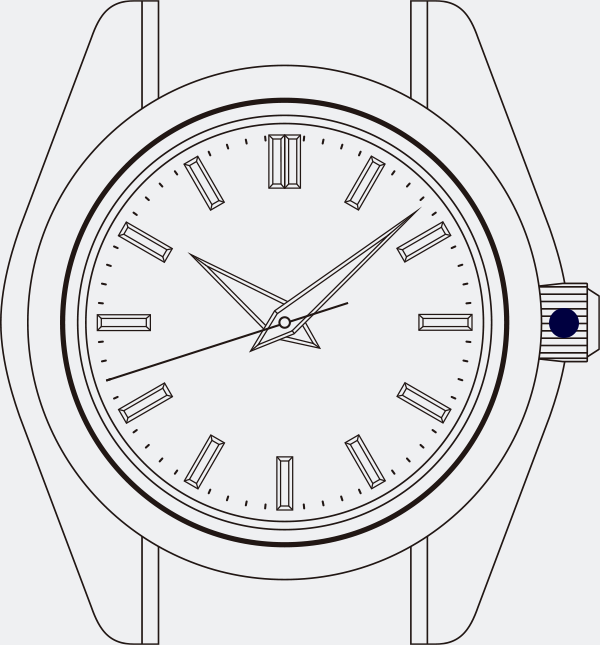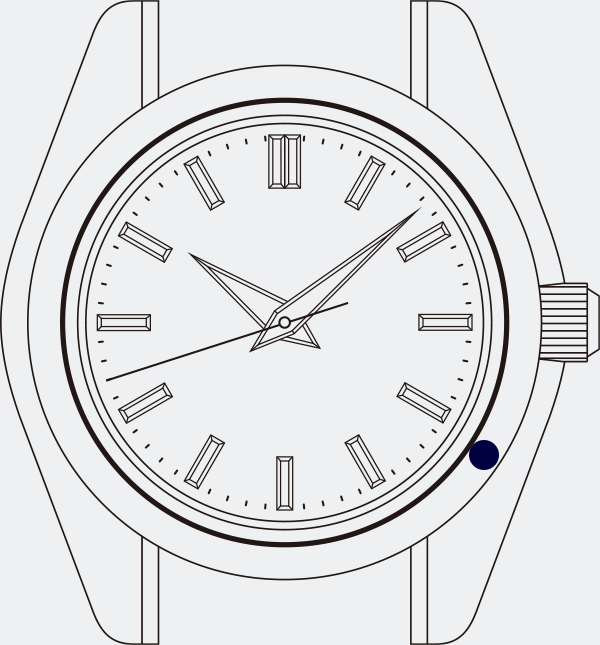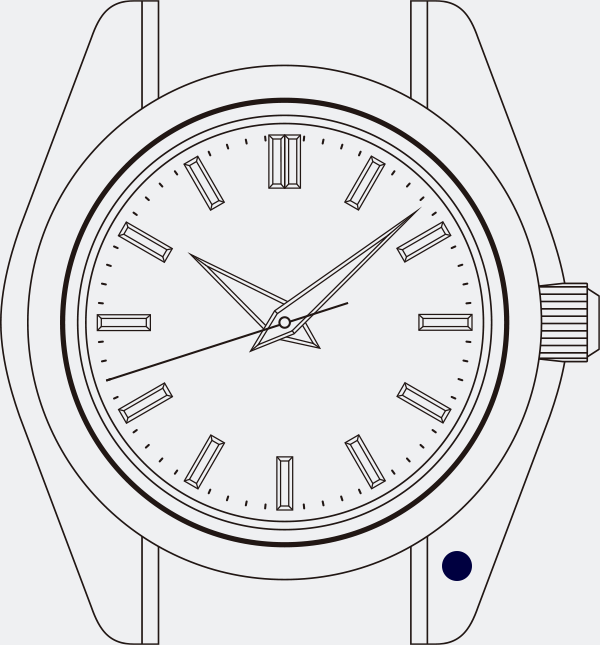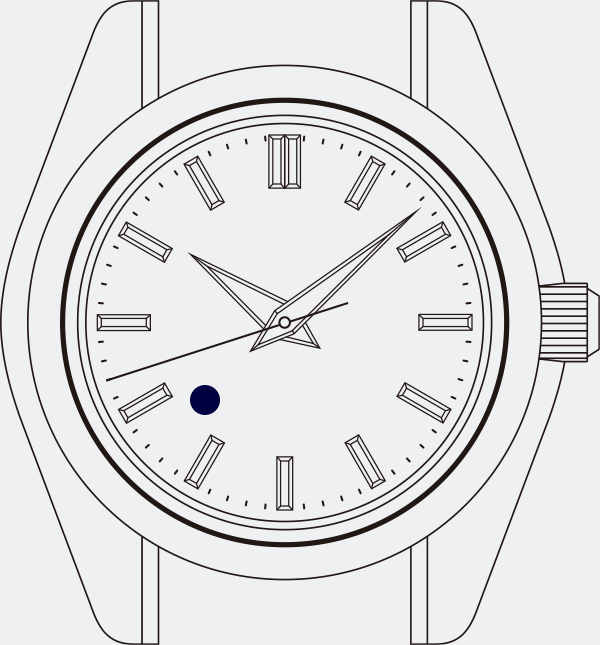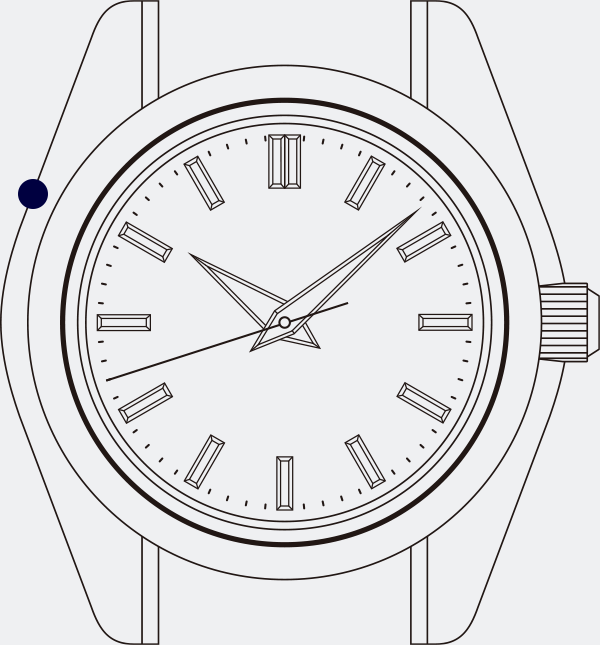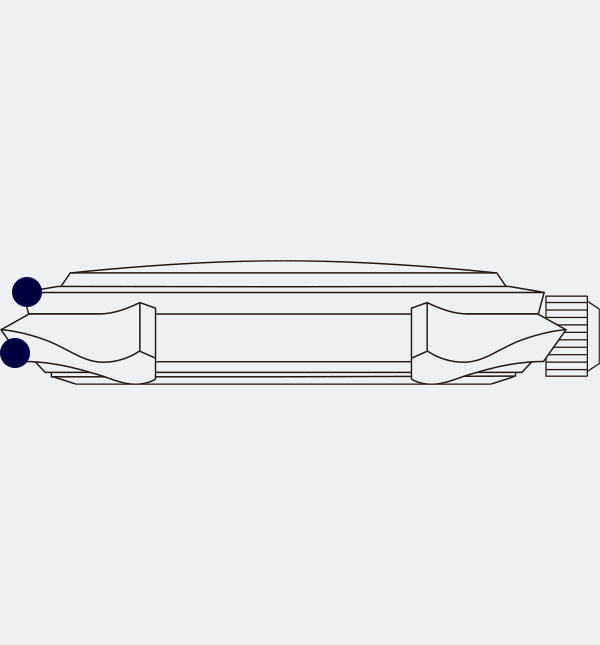The Grand Seiko Style.
Eternal values and a uniquely Japanese sense of beauty
The behind-the-scenes story of the birth of the Grand Seiko Style
The Grand Seiko Style is a design language centered on the idea of the “sparkle with quality.” It reflects exactly the essential characteristics of Grand Seiko: precision, beauty, legibility and ease of use. It represents form and function in perfect harmony. The Grand Seiko Style was developed seven years after the creation of the first Grand Seiko. In the earliest days, the focus had been primarily on the precision of the movements and the company had not established any real identity for its watches in terms of exterior design. A chief designer spent long hours at the Wako store in Ginza, Tokyo’s most exclusive shopping district, watching how people reacted to watches from all around the world. He realized that, in order to stand out and to attract the eye, Grand Seiko needed to have more brilliance. He saw that the way forward was to design watches with sharper angles and distortion-free surfaces so that they would “sparkle with quality.”
For the Japanese, black and white are seldom expressed in their extremes; there are always numerous gradations between light and shadow to be discovered. Shadow is appreciated as much as light and the harmony between the two is highly valued. On a perfectly polished surface, the play of light and shadow creates beautiful harmony. This interaction can be seen in traditional Japanese folding screens and Shoji sliding doors. Even though these screens and doors are constructed with simple straight lines and flat surfaces of paper and wood, the ever-changing interplay of light and shadow creates endless expressions of character. The Grand Seiko designer saw this clearly and decided that his designs would pay constant attention to the beauty of these infinite gradations. He therefore created the Grand Seiko Style to convey this truly Japanese sense of beauty. It focuses on straight lines and flat surfaces that together achieve a structural design with endless expressions of light and shadow.


A grammar of design, with three guiding principles
There are three design principles that are fundamental to the Grand Seiko Style. The first one is: “The design is made of flat surfaces and two-dimensional curves, with focus placed firmly on the flat surfaces. As a general rule, no three-dimensional curves should be utilized.” Instead of using curving three-dimensional surfaces, the Grand Seiko Style is composed of extremely sharp and flat surfaces formed from sections of conical ones. The rich “sparkle of quality” comes from the contrasts between light and shadow that these strong surfaces create. The second principle is: “Everything on the case, dial and hands should have as many flat surface areas as possible.” In order to heighten the contrast between the elements and to increase the watch’s legibility, as many surface areas as possible are made flat and the lines on the case, dial and hands are multi-faceted. The third principle is: “All surfaces, as a general rule, should be mirror-polished and be as distortion-free as possible.” This mirror finish further increases the contrast between light and shadow, creating a brilliantly sparkling watch. The mirror finish is achieved by the Zaratsu polishing technique, in which the surfaces are polished until they are distortion-free and by making the edges where the flat surfaces meet the slanted planes stand out distinctively to create a sharp impression. Then, with an inward-slanted case side and bezel wall, beautiful shadows are cast to not only produce expressive sparkles, but also to make the watch look thinner on the wrist. The crown is half recessed into the case to give its side a less obtrusive look and to achieve a comfortable fit for all wrist sizes.
Principle 1
The design should have flat surfaces and two-dimensional curves. Three-dimensional curves are generally not utilized.
Principle 2
The flat surfaces of the case, dial and hands should be as wide as possible.
Principle 3
Every surface should be distortion-free and have a mirror surface.
Nine design elements defined based on three design principles
Guided by these three principles, the Grand Seiko Style has nine distinct elements that give each Grand Seiko watch its uniquely Japanese appeal. These nine elements guide the creation of every detail of the watch, from the angle of the case, to the shape of the 12 o’clock index and the flatness of the dial. Thanks to this designer’s careful study and meticulous work six decades ago, each and every Grand Seiko has the special “sparkle of quality” on which its creators have always insisted. Every facet of the case, hands and the indexes is designed to reflect even the smallest ray of light, creating a crisp, clear, unique aesthetic that says “This is Grand Seiko, the ultimate practical watch.”
This core aesthetic was established in 1967 and still guides Grand Seiko today. It has been passed on faithfully from generation to generation while being adapted subtly to the changing times. In this way the Grand Seiko Style is both enhanced and preserved.
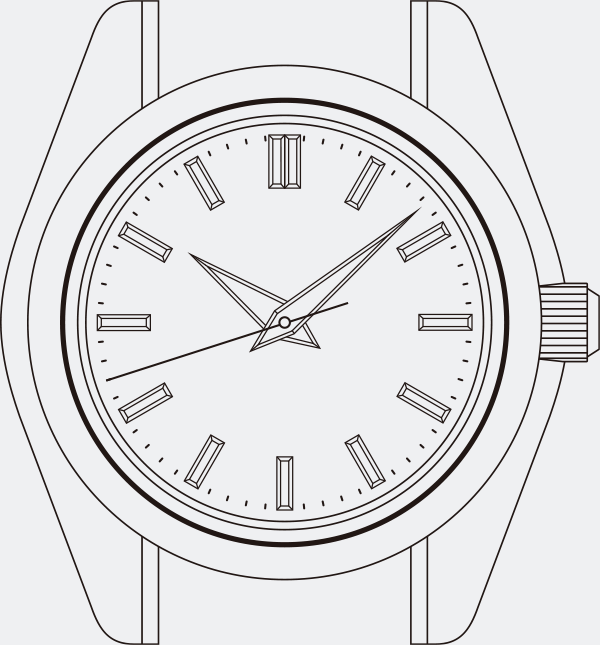










1967
44GS, the watch that first embodied the Grand Seiko Style
A masterpiece of excellent artisanship
In 1967, the Grand Seiko 44GS was created. It was the watch that established, once and for all, the Grand Seiko Style. The shape of the case was revolutionary. The flat front surface was polished to a distortion-free finish, achieved through Zaratsu polishing. The case sides slanted sharply inwards to allow the watch to sit neatly on the wrist and to give a unique look. The crown was then set deep into the case, to preserve the beauty of this line. The Grand Seiko designer carried the theme forward in every other detail to create the first embodiment of the Grand Seiko Style. He made the hands as well as the indexes multi-faceted to allow the light to play across the dial and he created a mirror-polished bezel so that the whole design aesthetic was based on sharpness, sparkle and the harmonious interplay of light and shadow. With the 44GS, Grand Seiko had found its design code and a legend was born.
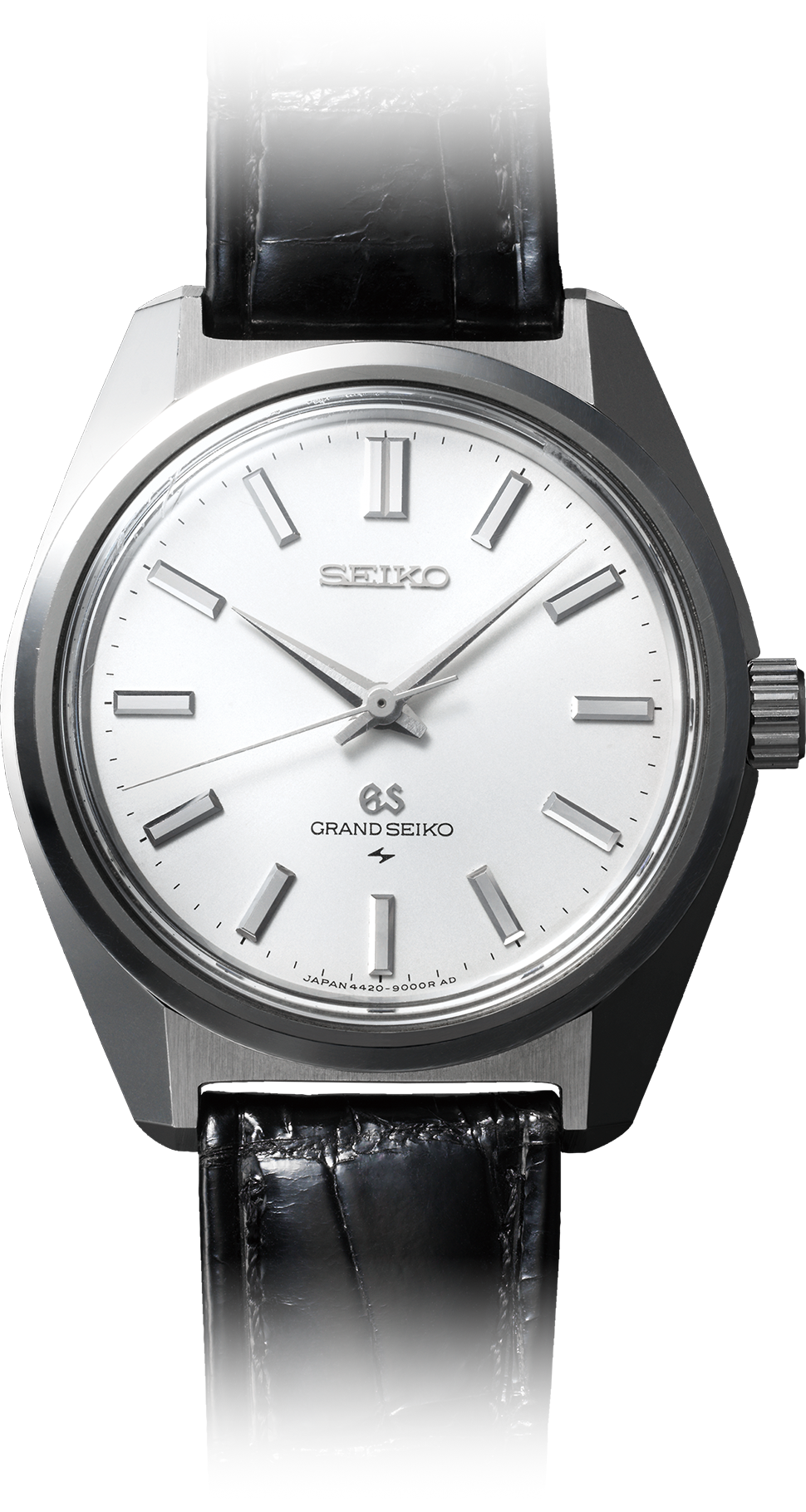


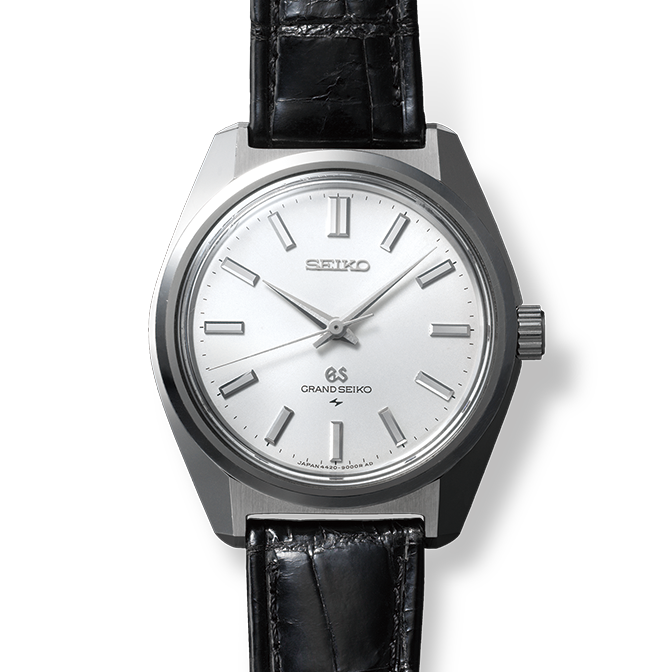
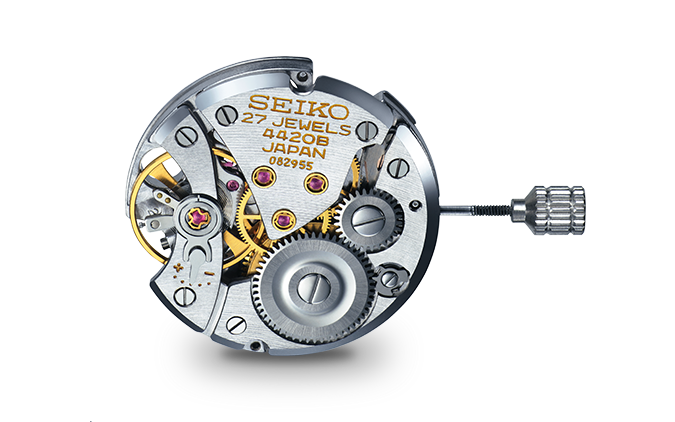
44GS, 1967
Remarkably, the 44GS was the first Grand Seiko watch manufactured by the Daini Seikosha.
A design code created around sharp lines and the “sparkle of quality”
Light, shadow and strong lines. These three elements formed the cornerstone of Grand Seiko Style but, before it could be realized, a new level of precision in manufacturing was required and it came about through a change in the way that measurements were made. Seiko had been using a special unit called “ligne,” which was the mainstream standard in the watchmaking industry but, in 1961, Seiko began to use the millimeter as the base for all measurements. This resulted in a change in the minimum unit from 1/4 ligne (approx. 0.56mm) to 0.1mm, allowing a more precise design of the watch case and exterior components. This change in the dimensional unit standard was particularly helpful in realizing the Grand Seiko Style in which flat surfaces and straight lines are juxtaposed and pinpoint accuracy in manufacturing was needed to achieve it. This change also demanded new levels of skill from the craftsmen and women of Grand Seiko as it was exceptionally challenging to materialize a design with case sides shaped in an elegant arc, as well as indexes and hands with a multi-faceted carved finish. In particular, the Zaratsu polishing technique required high fingertip sensitivity to adjust to the heat, vibrations and reduction in the polishing material while, at the same time, visualizing the final result. It was said at the time that it required at least 10 years to master this technique completely and its use represented a major investment in the skills and number of craftspeople.


2013
The modern re-interpretation of 44GS
Traditional watchmaking, raised to the level of art
In 2013, a modern re-interpretation of the 1967 44GS was created. It was powered by Caliber 9S65 and had a power reserve of 55 hours and a see-through case back. A year later, a second version was created that housed the high beat GMT Caliber 9S86. The new case was instantly recognizable as having been inspired by the 1967 original and was faithful in nearly every respect to the 44GS design. It offered highly polished, distortion-free surfaces and perfect comfort on the wrist. The beauty of the dial complemented the simplicity of the case. It had a delicate and beautiful radial pattern that was inspired by the many ridged contours of Mt. Iwate, the mountain that is visible through the wide windows of the studio where all Grand Seiko mechanical watches are designed, manufactured and assembled, by hand, by the studio’s craftsmen and women. The natural beauty of the studio’s location high up in the hills of Northern Japan near Morioka is both a source of inspiration and pride for the Grand Seiko watchmakers.
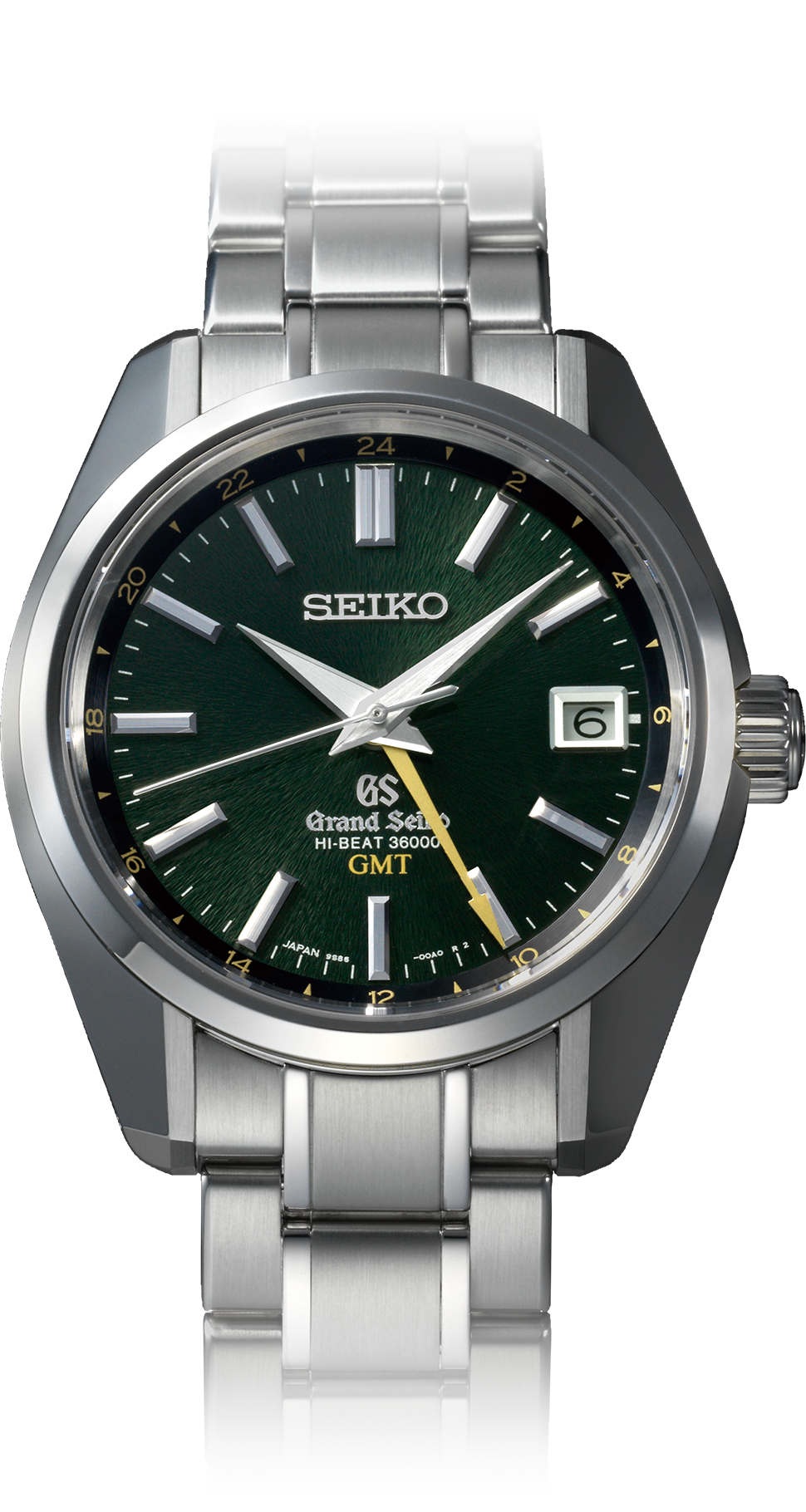



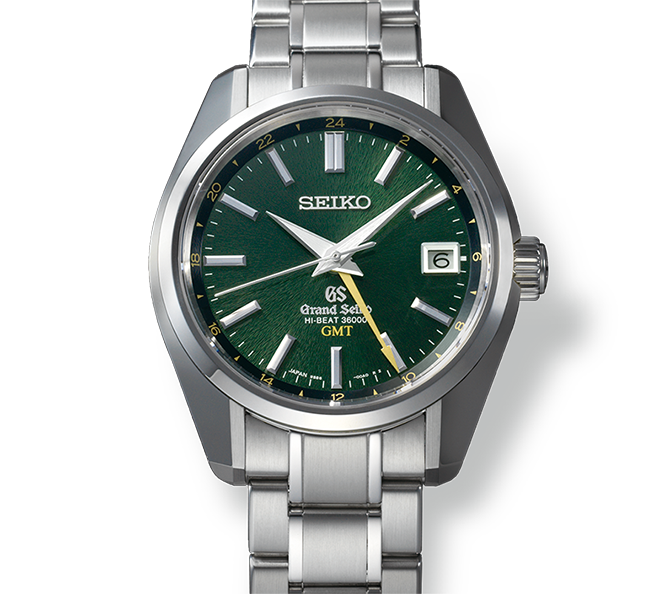
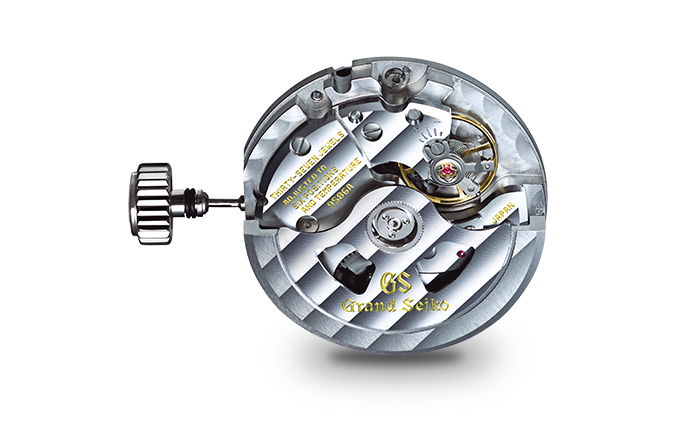
SBGJ005 (Caliber 9S86), 2014
At the Grand Prix d’Horlogerie de Genève 2014, this Hi-Beat 36000 limited edition, with a special oscillating weight colored gold by an anodic oxidation process, was awarded the “Petite Aiguille” prize. (Movement shown is the normal specification)
